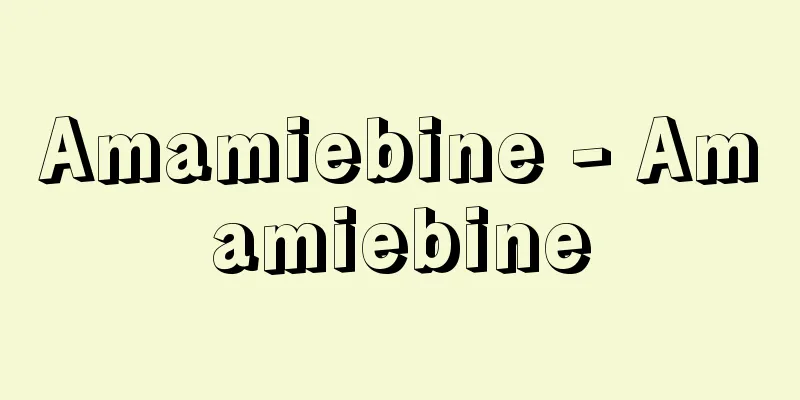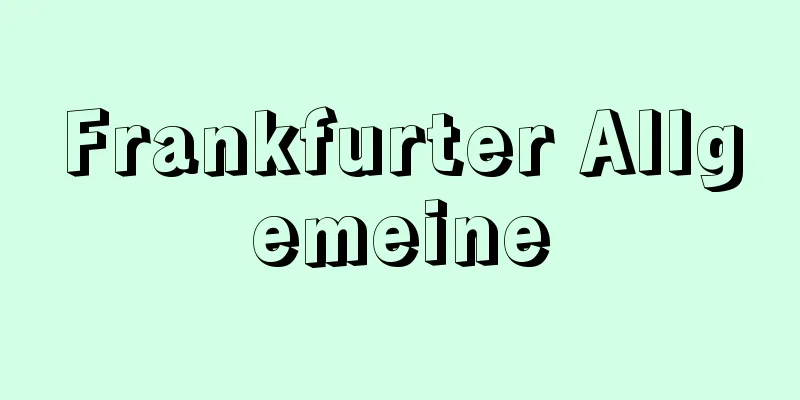Shigeharu Nakano

|
Poet, critic, and novelist. Born on January 25, 1902, in a farming family in Takaboko Village, Sakai County, Fukui Prefecture (present-day Maruokacho district, Sakai City). He began writing poetry with Kubokawa Tsurujiro and others at the former Fourth Higher School in Kanazawa. It was around this time that he discovered Muro Saisei, who he became close to. In 1924 (Taisho 13), he entered the German Literature Department of Tokyo Imperial University. The following year, he published the coterie magazine Naked Statue with Nakahira Satoru and others, and in 1926, Donkey with Kubokawa and Hori Tatsuo. At the same time, he joined the Shinjinkai through Hayashi Fusao and others in the summer of 1925, and the Marxist Literary Research Society (Marugei) was formed the following year, gradually becoming more left-leaning. The poems he wrote in "Nude Statue" and "Donkey" form the core of "Collected Poems of Nakano Shigeharu" (1931), and they were created when he looked deeply into what was inside himself and at the same time violently rejected it, saying, "Don't sing of the scarlet flowers or the dragonfly's wings." He graduated from Tokyo University in 1927 (Showa 2). In November 1926, the year before, all members of the Proletarian Arts League of Japan (Progei) joined the Proletarian Arts League of Japan, and Nakano was elected as a central committee member. However, due to the radicalism of Nakano and others influenced by Fukumotoism, Aono Suekichi, Hayama Yoshiki, Hayashi, Kurahara Korehito and others left Progei in June 1927. Among them, Hayashi, Kurahara and others who supported the Communist Party reunited with Progei in March 1928 to form the All-Japan Proletarian Arts League (NAP), and the debate continued within NAP as a debate between Nakano and Kurahara over the popularization of art. Nakano opposed Kurahara's dualism, writing, "What the masses want is the art of art, the king of kings." These essays included in "Hurried Notes on Art" (1929) are representative works of this period. He joined the Communist Party in 1931. In 1932, he was arrested and imprisoned in the crackdown on the Japan Proletarian Cultural League (KOPP), and was released on a suspended sentence in 1934. From then until the end of the war, Nakano's literary struggle consisted of looking back at his "converted" self, and exploring the relationship between immovable "things" and the human spirit amid the reality that was swept away by the war. The fruits of this tension were short and medium-length works such as "The Village House" (1935), "The Steam Locomotive's Boiler" (1937), "Way of Parting Songs" (1939), and "The Visionary and the Scenario" (1939), as well as "Notes on Saito Mokichi" (1940-42) and "Dazed Chat on the 'Dark Night' Passage" (1944). He rejoined the Communist Party in November 1945 (Showa 20) shortly after Japan's defeat in the war. He founded the New Japan Literary Association and played a central role in it. He was an active member of the House of Councillors from 1947 to 1950. During the Communist Party's "1950 split," he was on the side of the "international faction," and defended the literary movement against political ideology. In 1964, he was expelled for criticizing the bureaucratization of party management. His postwar work included many penetrating critiques, such as "About the Germ War in Korea" (1952), short stories that sharply expose reality, such as "Five Shakus of Wine" (1947), and rich long novels such as "Muragimo" (1954), "Pear Flowers" (1957-58), and "A, B, C, D" (1965-69). He died on August 24, 1979, and returned to his hometown of "Taiko Zanmai." In 1983, the Nakano Shigeharu Memorial Library, which houses his collection, was established in Maruoka Town, and a commemorative gathering is held in Tokyo every summer. [Mitsuda Ikuo] "The Complete Works of Nakano Shigeji, 28 volumes (1976-79, Chikuma Shobo)" ▽ "Study of Nakano Shigeji: Prewar and Wartime, by Sugino Yokichi (1979, Kasama Shoin)" ▽ "A Study of Nakano Shigeji, 2 volumes, by Kimura Yukio (1979, Ohfusha)" ▽ "Nakano Shigeji: Literature of Self-Reproach, by Okeya Hideaki (1981, Bungeishunju)" ▽ "A Revised Edition of Nakano Shigeji, by Mitsuda Ikuo (1981, Yagi Shoten)" ▽ "Nakano Shigeji's Notes on Mokichi, by Mitsuda Ikuo (1984, Dougyusha)" [References] | | | |Source: Shogakukan Encyclopedia Nipponica About Encyclopedia Nipponica Information | Legend |
|
詩人、評論家、小説家。福井県坂井郡高椋(たかぼこ)村(現坂井市丸岡町地区)の農家に明治35年1月25日生まれる。金沢の旧制四高で窪川(くぼかわ)鶴次郎らと詩作を始める。そのころ室生犀星(むろうさいせい)を知り、以後親しむ。1924年(大正13)東京帝国大学独文科に入学。翌年同人誌『裸像』を中平解(なかひらさとる)らと、26年からは『驢馬(ろば)』を窪川、堀辰雄(たつお)らと刊行するが、一方、25年夏には林房雄らを通して新人会に入会、翌年マルクス主義文芸研究会(マル芸)結成、しだいに左傾を深める。『裸像』『驢馬』に書いた詩が『中野重治詩集』(1931)の中心であるが、それらは、「お前は赤ままの花やとんぼの羽根を歌うな」と、自分の内部にあるものを深くみつめると同時にそれを激しく否定したところに成立した。 1927年(昭和2)東大卒業。その前年の1926年11月、日本プロレタリア芸術連盟(プロ芸)にマル芸の全員が参加、中野は中央委員に選ばれるが、福本イズムに影響された中野らのラディカリズムが原因で、1927年6月、青野季吉(すえきち)、葉山嘉樹(よしき)、林、蔵原惟人(これひと)らはプロ芸を脱退。うち林、蔵原ら共産党支持派は1928年3月、プロ芸とふたたび合体して全日本無産者芸術連盟(ナップ)を結成、論議はナップ内の中野対蔵原の芸術大衆化論争に持ち越された。「大衆の求めているのは芸術の芸術、諸王の王なのだ」と書いて中野は蔵原の二元論に対立する。これら『芸術に関する走り書的覚え書』(1929)に収められた評論群がこの期の代表作である。1931年共産党入党。1932年コップ(日本プロレタリア文化連盟)大弾圧で検挙投獄され、1934年に執行猶予で出所。以後敗戦までの中野の文学的闘いは、「転向」した自己を見据え、戦争につれて流されてゆく現実のなかで、動かない「もの」と人間精神とのかかわりを追究することにあった。こうした緊張の所産が『村の家』(1935)、『汽車の罐焚(かまた)き』(1937)、『歌のわかれ』(1939)、『空想家とシナリオ』(1939)の中編・短編であり、『斎藤茂吉ノオト』(1940~42)、『「暗夜行路」雑談』(1944)であった。 敗戦後まもなくの1945年(昭和20)11月共産党に再入党。新日本文学会を創設して中心的な働き手となる。1947~50年参議院議員として活躍。共産党の「50年分裂」の際は「国際派」の側にあり、政治主義に対して文学運動を守り抜く。1964年、党運営の官僚化を批判して除名される。『朝鮮の細菌戦について』(1952)をはじめとする透徹した多くの評論、『五勺の酒』(1947)などの現実を鋭くえぐった短編、『むらぎも』(1954)、『梨(なし)の花』(1957~58)、『甲乙丙丁』(1965~69)の豊かな長編世界が戦後の仕事。昭和54年8月24日没、郷里の「太閤(たいこう)ざんまい」の土に帰る。1983年(昭和58)丸岡町にその蔵書を収めた中野重治記念文庫ができ、毎夏、東京で記念集会が行われる。 [満田郁夫] 『『中野重治全集』全28巻(1976~79・筑摩書房)』▽『杉野要吉著『中野重治の研究 戦前・戦中篇』(1979・笠間書院)』▽『木村幸雄著『中野重治論』2冊(1979・桜楓社)』▽『桶谷秀昭著『中野重治 自責の文学』(1981・文芸春秋)』▽『満田郁夫著『増訂 中野重治論』(1981・八木書店)』▽『満田郁夫著『中野重治の茂吉ノオト』(1984・童牛社)』 [参照項目] | | | |出典 小学館 日本大百科全書(ニッポニカ)日本大百科全書(ニッポニカ)について 情報 | 凡例 |
<<: Collection of poems by Shigeharu Nakano - Collection of poems by Shigeharu Nakano
>>: Nakanoguchi [Village] - Nakanoguchi
Recommend
Uwamizuzakura - Uwamizuzakura
A deciduous tall tree of the Rosaceae family (APG...
Castle fan - Kidono no Ougi
〘Noun〙 A type of fan made in Kyoto. It is said to ...
Airborne spinning top - Airborne spinning top
...One theory is that the trend started when sumo...
Phlegm
Concept/Mechanism Even healthy individuals produce...
Yabuki [town] - Yabuki
A town in Nishishirakawa County in the southern Na...
Don Juan de Austria
…Born in Rome, he came of age in Spain. In 1571 h...
Recharge area - Kanyoiki
The equilibrium line is the long-term average pos...
Cannabaceae
…Currently, it is cultivated in Tochigi Prefectur...
Antonio Salieri
Italian composer. Born in Legnago near Verona. He...
Ebisu Daikoku
...It is believed that Daikokuten was added becau...
Palamás, K.
…He wrote many highly advanced works that went be...
Shirakawa Pass - Shirakawa Pass
A checkpoint located at the entrance to Mutsu Prov...
Turdinae
...The Turdinae also pass through in spring and a...
Port Orford cypress
...Benihi (red cypress) C. formosensis Matsum. gr...
ischial callosity
...The skin on the buttocks that turns red in thi...







![Kamiichi [town] - Kamiichi](/upload/images/67cb3ead76893.webp)

